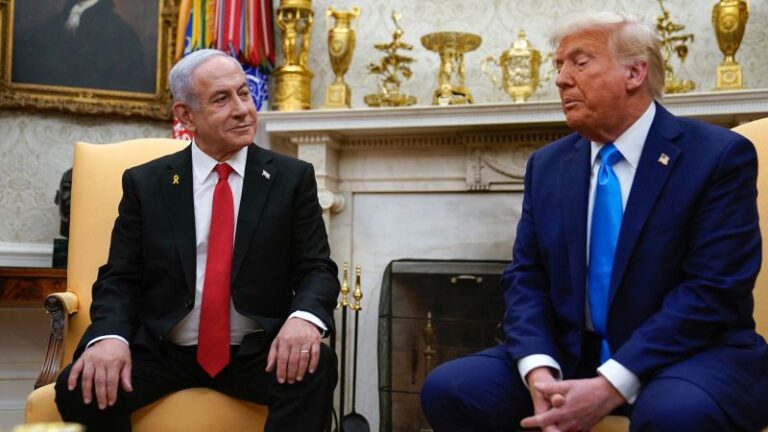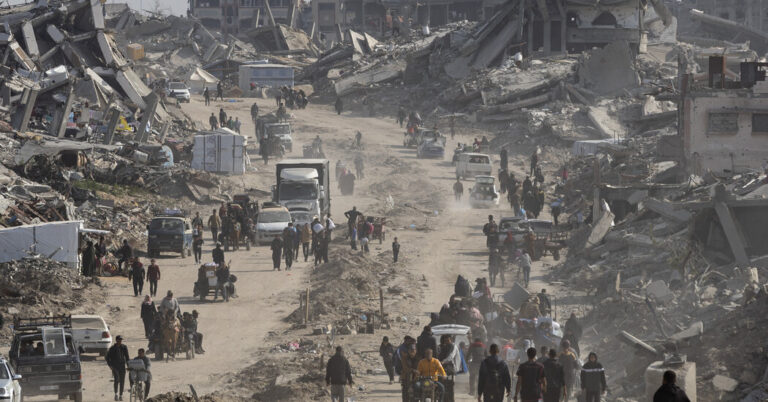Israel bombed several places in Yemen on Thursday, including the airport in Sana’a, where a high-level United Nations delegation led by World Health Organization Director General Tedros Adhanom Ghebreyesus was present.
Israel began directly striking the Houthi (Ansar Allah) militant group in Yemen last week, expanding its ongoing campaign against Iran and the so-called “axis of resistance”.
Following Thursday’s air assault on Yemen’s capital, some Red Sea ports, and power stations, the UN said in a statement that Secretary-General António Guterres was “gravely concerned about [the] intensified escalation” that had “reportedly resulted in numerous casualties”.
Israeli warjets have carried out such long-distance operations earlier, flying more than 2,000 km for example, during its Operation Long Arm in response to a Houthi drone attack in July, which disrupted humanitarian operations at the Yemeni port of Hodeida.
The scale of the ongoing strikes is wider, and the bombing of Sana’a is a first. With the capabilities of Hamas and Hezbollah severely degraded but with the Houthis continuing to succeed in direct attacks, Israelis have been debating whether to focus on the “last remaining Iranian proxy” in Yemen or to go after Iran itself.
On December 24, Defence Minister Israel Katz confirmed for the first time that Israel had killed Ismail Haniyeh, the political chief of Hamas, in Tehran in July.
On Thursday, Israel’s Prime Minister Benjamin Netanyahu said, “We are determined to cut off this terrorist arm of Iran’s axis of evil. We will persist until we get the job done.”
What is the background of the Israeli strikes in Yemen?
In January this year, the United States, United Kingdom, and their allies launched Operation Poseidon Archer, a sustained bombing campaign to degrade Houthi military capabilities in Yemen. The campaign supplements Operation Prosperity Guardian, a maritime security operation begun in December 2023 to protect shipping in the Red Sea from attacks by the militants.
Even so, the Houthis have succeeded in forcing commercial shipping between Asia and Europe to either go around the Cape of Good Hope or, if passing through Bab-el-Mandeb, the narrow entrance to the Red Sea between Yemen and the Horn of Africa, to make peace with very high insurance premiums.
Most companies have chosen the former – thus ensuring that the Houthi response to Israel’s war in Gaza has continued to have global implications. The IMF’s seven-day moving average for transit calls in the Suez Canal (number of ships) fell from 73 on December 21, 2023 to 36 by February 2024, and has never crossed 50 since. On December 15, this number was 27.
The Houthis have long had an interest in fighting the US (which supported Saudi Arabia in its war against the Tehran-backed group) and Israel. While the tactical necessities of the civil war, ongoing since 2014, kept the Houthis focused on Yemen, by October 7, 2023 – the day of the Hamas attacks on southern Israel – they were at an interesting juncture.
The Houthis had broadly tilted the local balance of power in their favour, and forced Riyadh and Abu Dhabi into negotiations as these regional power centres sought to extricate themselves from the war in Yemen. Both Saudi and the UAE have stayed out of the US-led military coalitions, despite being the principal opponents of the Houthis. The Zaidi Shia militant group now controls most of Northern Yemen, including Sana’a.
Following the October 7 terrorist attacks, as Israel began its bombardment of Gaza, the Houthis declared their casus belli as stopping Israel and deterring America. At that point, they were a group that had not only survived a 10-year civil war and high- casualty Saudi and Emirati air strikes, but one that had begun to project, from 2021 onward, a certain permanence. Indeed, the US had in a show of pragmatism lifted the Foreign Terrorist Organisation (FTO) tag from the Houthis that year. (The Biden Administration redesignated them in January 2024.)
Exploiting the window of opportunity to increase their profile, the Houthis first mounted a cruise/ ballistic missile and drone campaign against Israel, before shifting their attacks to the maritime domain by December 2023. They benefited not only from Iranian military aid and supply, but also Russian targeting intelligence. And they have remained defiant in the face of the fresh Israeli air strikes.
Where do the Houthis stand in the Yemeni civil war?
The unprecedented success in the Red Sea and the renewed American focus on destroying them have raised the domestic profile of the Houthis.
By early 2024, Ansar Allah was announcing large numbers of recruitments – between 150,000 and 200,000 by their own estimates. In July, Israel’s Red Sea port of Eilat declared bankruptcy after eight months of paralysis caused by Houthi attacks on shipping. In September, officials from Yemen’s internationally recognised government in capital-in-exile Aden conceded that Western air power had failed to weaken the Houthis.
Ansar Allah has benefited from the Arab powers’ desire to move away from conflict and focus on economic diversification, which requires risk reduction for critical energy infrastructure. At the same time, despite the Tehran-Riyadh rapprochement of 2023, Iranian arms have continued to flow to Ansar Allah.
The Houthis do face lingering threats from other factions in the civil war, however. The UAE-backed secessionist Southern Transitional Council has declared its willingness to collaborate with Israel against the Houthis.
Where are the Houthis placed in the ‘axis of resistance’?
The Houthi stock in Iranian overseas operations continued to rise through 2024, especially as Israel significantly weakened Hezbollah and Hamas, and the fall of the Bashar al-Assad regime in Syria severed Tehran’s lines of communication with Lebanon.
The uptick in direct Houthi attacks against Israel since July took place as the Yemeni group increased its coordination with the Iraq-based Islamic Resistance (or the Popular Mobilization Forces/Hashd al-Shaabi). That month, the Houthis opened an office in Baghdad, even as the Hashd began to mount its own direct attacks against Israel.
Days before he fled, Bashar al-Assad had urged the Iraqi government to allow the Hashd to cross over into Syria – especially since the Shia militias in Iraq have significant operational experience fighting both ISIS and other jihadist groups. Neither Baghdad nor Tehran were keen, however – which signalled Assad’s approaching end.
December may be seen as having injected a stronger instinct of self-preservation into the weakened Iranian axis – even as Iranian government officials themselves write editorials in The Economist and Foreign Affairs signaling openness to engaging the West. The Houthis are currently the spearhead of the axis against Israel, with the Hashd enabling that effort, even as they keeps their own distance from the war, at least for now.
Bashir Ali Abbas is a research associate at the Council for Strategic and Defence Research, New Delhi
Why should you buy our Subscription?
You want to be the smartest in the room.
You want access to our award-winning journalism.
You don’t want to be misled and misinformed.
Choose your subscription package




